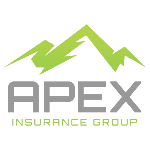A Guide To Value-Based Selling in the Insurance Industry
Being an insurance company owner can be a lucrative profession. It’s a chance to assist people in safeguarding their most prized possessions while having a successful profession. Numerous challenges must be addressed at the same time. Many individuals find purchasing challenging when they have no urgent demand for anything. Individuals get insurance to safeguard themselves from a potential scenario.
When there are no pressing problems, some people find it difficult to grasp why they need to buy anything; in these situations, value-based selling can be helpful.
Let’s First Understand What Is Value-Based Selling in the Insurance Industry
Many clients think they don’t need insurance since they don’t see actually using the advantages it offers themselves, since they do not see having troubles with their residences, passing away early (life insurance), getting into a car crash (collision or comprehensive auto insurance), or any combination of these problems happening to them.
They are so merely searching for the cheapest insurance option available. The insurance agent’s objective is to persuade the client of the importance of emphasizing the insurance policy’s worth rather than its overall cost.
Value-based insurance selling is the name of this method. Insurance brokers and agents must, in this procedure, shift the user’s focus from the price of the coverage to the advantages it offers. Insurance agents will have a better time completing the transaction if they put the buyer in a fictitious but plausible circumstance where they would require that policy.
How Does It Operate In The Insurance Sector?
The insurance sector can benefit from value-based insurance selling in a number of circumstances. Among the most prominent examples are:
- Home Insurance
- Life Insurance
- Car Insurance
What Makes the Process Effective?
This tactic’s major objective is to convince people to pay attention to what they are getting rather than the cost. It is true that the ideal insurance plan will cost more than the least costly choice, but it’s crucial to view this as an additional layer of safety rather than a cost.
For instance, policyholders will receive an additional layer of security that can shield them and their assets against a potentially risky situation by acquiring a value-based plan. This kind of insurance policy may occasionally be able to shield someone from financial ruin. The main point of a value-based insurance policy presentation is what brokers and agents should emphasize.
How Does Value-Based Selling Work for Agents and Brokers?
Brokers and agents can improve their conversion rate by putting this concept into practice. Among the best methods to put this policy into practice are the following:
- Agents should communicate to policyholders that liability-only insurance products do not provide protection from theft or natural catastrophes when it comes to auto insurance. A person in the Midwest could require more tornado protection. People living near the ocean may require additional protection against hurricanes and floods. Policyholders should be informed by agents that theft can occur at any time.
- Agents for life insurance should warn clients that if their income increases, they might require more coverage. When a policyholder passes away, the objective of life insurance is to replace lost income. As people advance in their jobs, their income will fluctuate. Therefore people should provide their households with the appropriate level of safety.
- Agents for home insurance must carefully examine the precise amount of protection offered by each policy. Then, policyholders might require extra defense against particular hazards. It is simpler for customers to understand what kind of protection they are getting with each policy by framing these hazards, such as fires and floods, as possibilities.
Agents can raise their conversion rates by speaking to policyholders about the benefits of value-based insurance rather than the costs involved.





